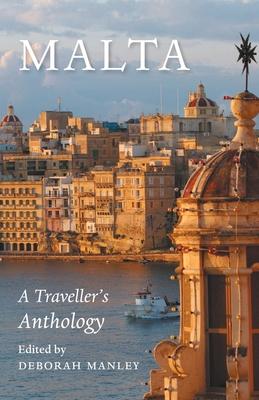Few countries are as marked by their history as the Maltese islands of Malta and Gozo. At least five centuries before St. Paul was shipwrecked on Malta's northern shore on his way to Rome and martyrdom, what are perhaps the oldest stone buildings in the world were raised here. Always vulnerable due to their strategic position in the Mediterranean, the islands have been invaded and occupied by successive forces: Greeks, Romans, Muslims from North Africa, Normans and Spaniards. In the sixteenth century Malta became the stronghold of the Knights Hospitaller of St. John, who built the city of Valletta. The Knights were succeeded by Napoleonic troops, then by the British, who remained until independence in 1964. Each period of Malta's turbulent history not least its heroic role during the Second World War has added to its rich cultural fabric. And each period has produced its own literature, which is gathered in this original collection. The 1565 Siege of Malta, which pitted the Knights against the might of the Ottoman Empire, was recorded in detail by Francisco Balbi di Correggio, a Spanish soldier. The history of the Knights was later written by Louis de Boisgelin, himself a Knight, while in the nineteenth century Malta became a fashionable destination for those going beyond the Grand Tour, attracting Lord Byron, Thackeray, Disraeli and Sir Walter Scott, who judged Valletta 'a city for gentlemen built by gentlemen'. In the twentieth century Evelyn Waugh was a visitor, Anthony Burgess had his home confiscated for non-payment of taxes while David Niven had a memorable experience at a fancy dress party. Deborah Manley's selection of extracts reveals how generations of writers have viewed the landscapes of Malta and Gozo, the people of the islands, the splendours of Valletta and its famous harbour, and the celebrated festas, the village festivals that celebrate the island's Catholic identity. An introduction places these extracts in context, while the anthology also considers how Maltese writers have imagined and depicted their homeland.

Few countries are as marked by their history as the Maltese islands of Malta and Gozo. At least five centuries before St. Paul was shipwrecked on Malta's northern shore on his way to Rome and martyrdom, what are perhaps the oldest stone buildings in the world were raised here. Always vulnerable due to their strategic position in the Mediterranean, the islands have been invaded and occupied by successive forces: Greeks, Romans, Muslims from North Africa, Normans and Spaniards. In the sixteenth century Malta became the stronghold of the Knights Hospitaller of St. John, who built the city of Valletta. The Knights were succeeded by Napoleonic troops, then by the British, who remained until independence in 1964. Each period of Malta's turbulent history not least its heroic role during the Second World War has added to its rich cultural fabric. And each period has produced its own literature, which is gathered in this original collection. The 1565 Siege of Malta, which pitted the Knights against the might of the Ottoman Empire, was recorded in detail by Francisco Balbi di Correggio, a Spanish soldier. The history of the Knights was later written by Louis de Boisgelin, himself a Knight, while in the nineteenth century Malta became a fashionable destination for those going beyond the Grand Tour, attracting Lord Byron, Thackeray, Disraeli and Sir Walter Scott, who judged Valletta 'a city for gentlemen built by gentlemen'. In the twentieth century Evelyn Waugh was a visitor, Anthony Burgess had his home confiscated for non-payment of taxes while David Niven had a memorable experience at a fancy dress party. Deborah Manley's selection of extracts reveals how generations of writers have viewed the landscapes of Malta and Gozo, the people of the islands, the splendours of Valletta and its famous harbour, and the celebrated festas, the village festivals that celebrate the island's Catholic identity. An introduction places these extracts in context, while the anthology also considers how Maltese writers have imagined and depicted their homeland.